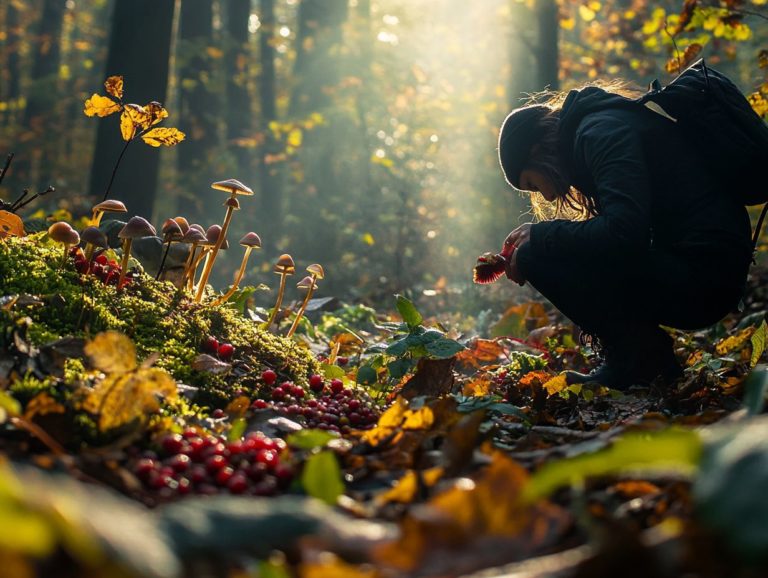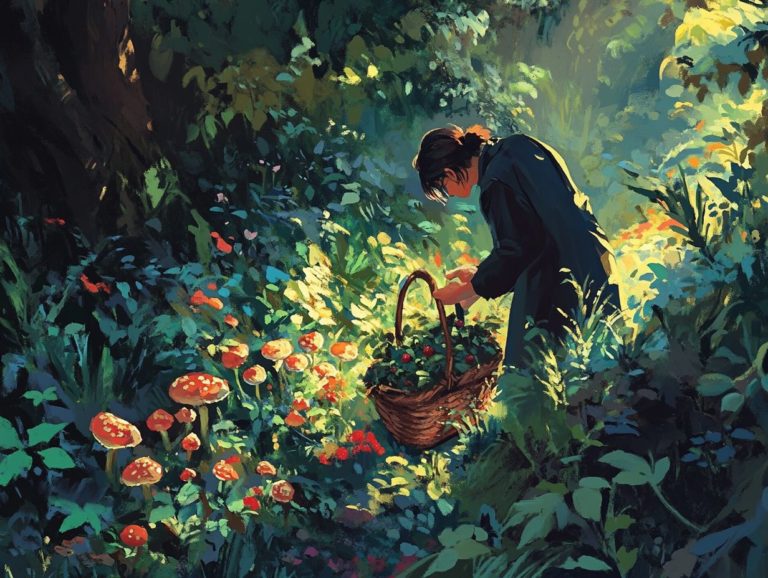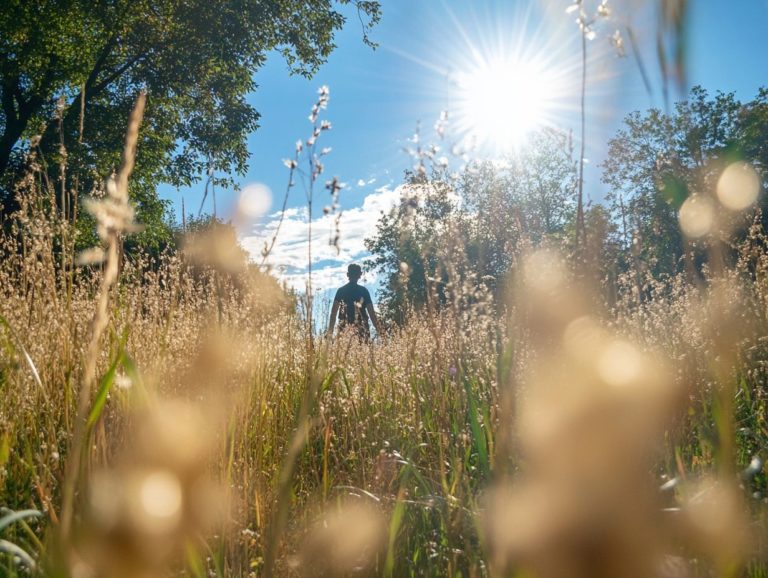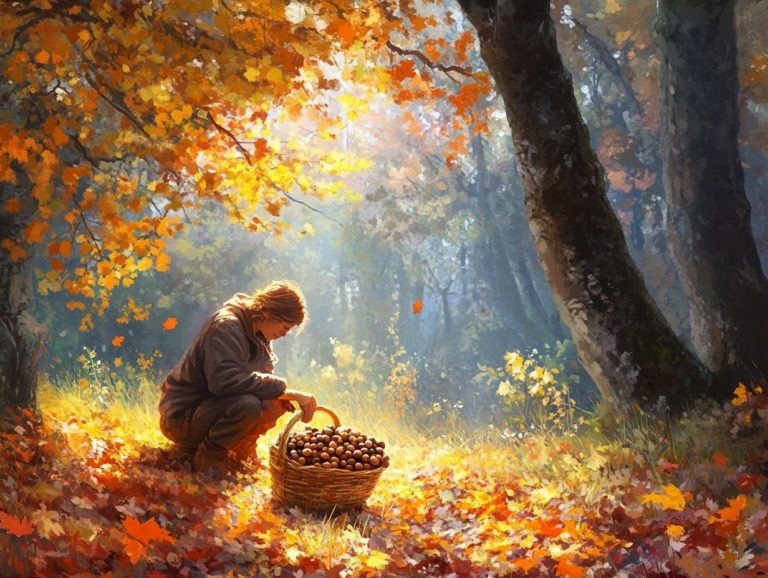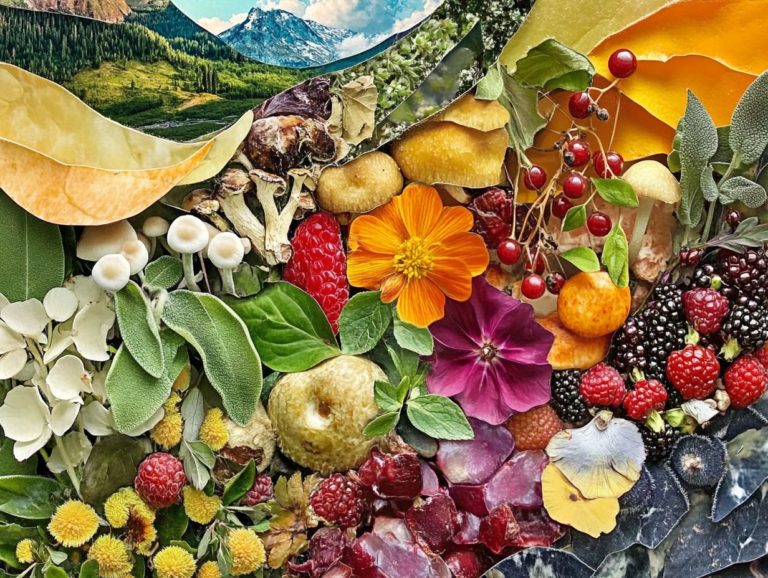Seasonal Foraging: The Best Times to Gather Edibles
Seasonal foraging presents a rewarding and sustainable opportunity for you to connect with nature while savoring the diverse edibles that each season has to offer.
From the vibrant greens of spring to the hearty finds of winter, understanding when and where to forage can elevate your culinary experiences.
This exploration of seasonal foraging will guide you through the best times to gather wild foods throughout the year, along with practical tips for safe and responsible harvesting.
Have you ever wanted to taste the wild flavors of nature? Embrace the joys of foraging and unlock the rich flavors of the seasons!
- Key Takeaways:
- What is Seasonal Foraging?
- When to Forage for Spring Edibles
- Foraging in Summer
- Autumn Foraging Tips
- Winter Foraging: Is it Possible?
- Tips for Safe and Sustainable Foraging
- Frequently Asked Questions
- What is seasonal foraging and why is it important for gathering edibles?
- How do I know when the best time is to gather edibles?
- Are there certain times of the year that are better for foraging than others?
- What are the benefits of gathering edibles during their peak season?
- Are there any safety precautions to keep in mind when foraging for edibles?
- Can I forage for edibles year-round?
- Seasonal foraging involves gathering wild edibles during specific times of the year, providing various benefits such as access to fresh and nutritious foods, making it an essential part of food foraging.
- Spring is a great time to forage for edible plants, as they are abundant and easy to identify. However, proper harvesting techniques and precautions should be followed.
- Summer offers a wide variety of wild foods to gather, such as berries and mushrooms. It is important to know which plants are safe to consume and to forage responsibly.
Contents
Key Takeaways:
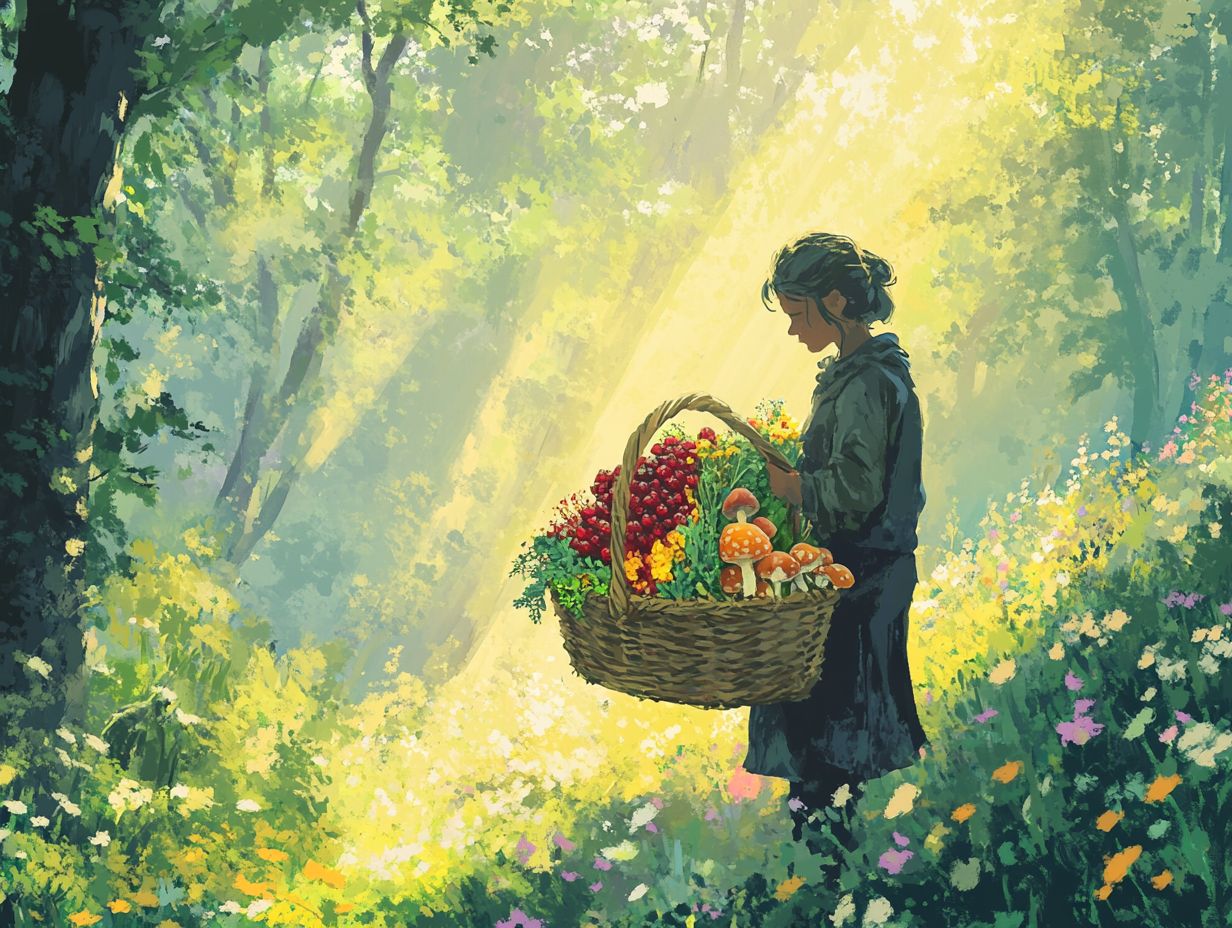
What is Seasonal Foraging?
Seasonal foraging is a captivating practice that invites you to gather wild edible plants at specific times of the year. Learning about the best time to forage edible fungi creates a profound connection with nature while enriching your diet with healthy foods.
This approach not only provides a sustainable source of fresh ingredients but also deepens your understanding of local ecosystems.
Take spring, for instance; during this season, you can uncover a delightful selection of greens that elevate your meals with vibrant flavors and textures. From chickweed to dandelion, each season unveils a unique assortment of plants that can be transformed into exquisite salads and other culinary creations.
When to Forage for Spring Edibles
Early spring offers you an enchanting opportunity to uncover a treasure trove of tender greens and wild edibles as nature stirs from its winter slumber. With vibrant plants like chickweed, hairy bittercress, garlic mustard, field garlic, and dandelion making their appearance, you can revel in the delightful variety of flavors and textures this season has to offer.
Each of these greens not only elevates your meals but also brings unique nutritional benefits to the table. They are perfect candidates for mouth-watering salads and delicious greens.
Identifying and Harvesting Spring Plants
Identifying and harvesting spring plants requires a keen eye and a touch of knowledge about wild edible plants. This ensures you can safely indulge in the abundance that nature offers.
Familiarizing yourself with key identifying features like leaf shape, color, and growth patterns is crucial for distinguishing between edible species, such as garlic mustard, and their potentially harmful look-alikes.
Understanding sustainable harvesting techniques means gathering plants without harming them, preserving these plants for future generations.
Consider the specific habitats where these plants thrive, whether in moist forest edges or sunny meadows. Observing seasonal growth patterns, including when certain plants emerge, will guide you on when to look for them.
Learning to harvest only what you need, while leaving enough plants to regrow for the following seasons, reflects your commitment to environmental stewardship.
This mindset enriches local ecosystems and fosters a deeper connection with nature, ensuring that foraging remains a sustainable and responsible way to enjoy wild edibles.
Foraging in Summer
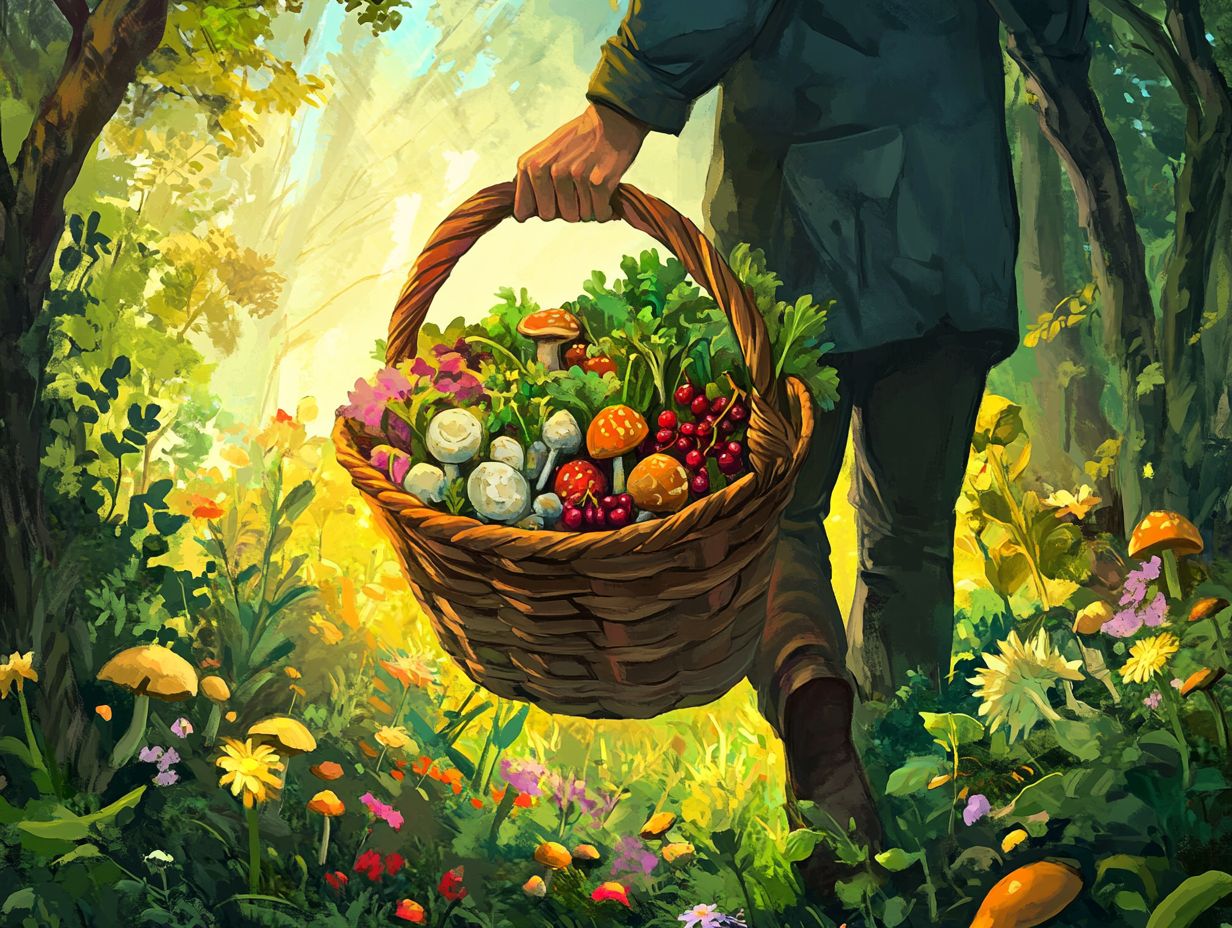
Summer unfolds as a vibrant tapestry for foraging. The lush landscape offers a treasure trove of wild foods, ideal for those adventurous souls eager to elevate their cooking experiences.
Picture yourself savoring juicy blackberries, aromatic elderberries, and the nutritious stinging nettle. Each brings its own distinct flavor to the table, ready to transform your dishes and desserts into something truly extraordinary.
You might also come across curly dock and velvet foot mushrooms during your foraging adventures. Don t overlook curly dock, a hidden gem that may not be as well-known but is equally rewarding. It can grace your salads or be saut ed as a delightful green, showcasing the remarkable ingredients available during this abundant season.
Best Wild Foods to Gather in the Summer Months
The best wild foods to gather during the summer months include a delightful array of fruits and greens that offer both flavor and nutrition. If you’re ready to explore, here’s what to know about seasonal foraging in your area, perfect for your adventurous foraging spirit.
Roam through meadows and woodlands to discover nature’s bounty. Every find turns your adventure into a rewarding experience full of delicious flavors!
Take wild blueberries, for example; they re bursting with antioxidants, while dandelion greens help cleanse the body. Beyond the health benefits, foraging invites you to forge a deeper connection with the environment, allowing you to appreciate nature’s seasonal rhythms and uncover the joy hidden within its treasures.
Autumn Foraging Tips
Autumn foraging unfolds a captivating experience as the landscape undergoes a stunning transformation. You can reveal a bounty of wild edibles such as mushrooms and berries.
As the leaves shift to vibrant hues and the air turns crisp, get ready to uncover delightful treasures like velvet foot mushrooms renowned not just for their exquisite taste but also their impressive nutritional benefits.
It s essential to adopt effective seasonal harvesting techniques and prioritize safety measures when sourcing edible mushrooms and other wild foods.
Seasonal Harvesting Techniques and Precautions
When you venture out to forage for wild edible plants in autumn, employing effective harvesting techniques while adhering to safety precautions is crucial for a successful and enjoyable experience.
Using proper techniques not only ensures your well-being but also promotes environmental sustainability. This means taking only what you need and leaving enough for regeneration, contributing positively to the local flora.
Understanding the specific characteristics that distinguish edible mushrooms, like the velvet foot, from their toxic counterparts can help you avoid potentially dangerous mistakes. It s wise to carry a reliable field guide or consult with experienced foragers to verify your findings.
Being aware of local regulations regarding foraging can further protect both you and the natural habitat, fostering a respectful relationship with nature.
Winter Foraging: Is it Possible?
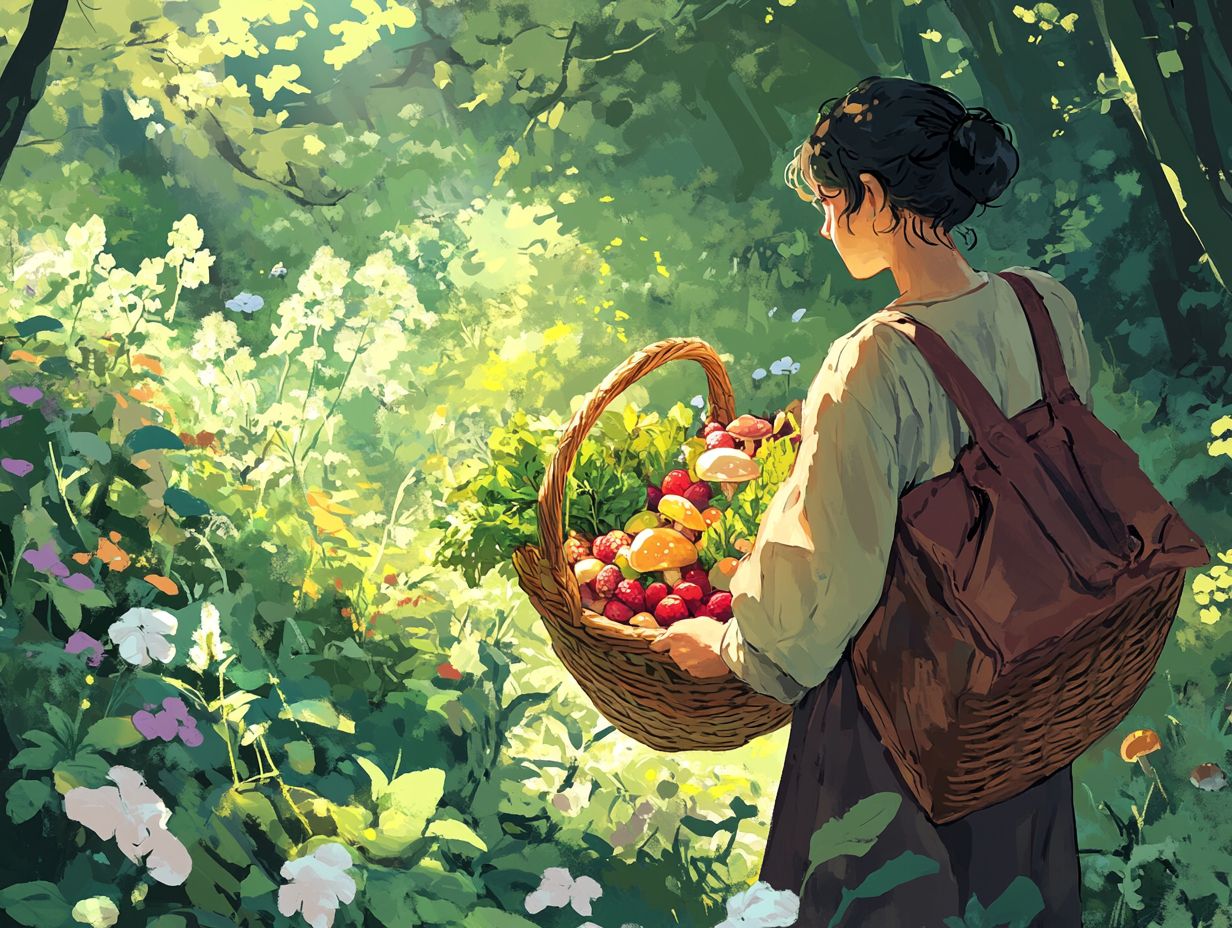
Winter foraging presents you with both unique challenges and exciting opportunities. The cold months can make it tricky to locate edible plants, yet some resilient species thrive even in harsh conditions.
While many plants retreat beneath the frost, you can still seek out evergreen sources like pine needles, which offer both flavor and nutritional benefits. Hardy plants such as curly dock also endure winter’s chill, waiting for the discerning forager.
Embracing winter foraging opens up a world of exciting discoveries! It requires a shift in mindset and a newfound appreciation for the subtle beauty that winter has to offer.
Challenges and Opportunities for Winter Foraging
The challenges of winter foraging can be daunting. Edible plants often hide beneath layers of snow, and harsher weather conditions may intimidate even the most experienced foragers.
Yet, there are opportunities waiting to be seized. Resilient species like pine needles and stinging nettle thrive in the cold, offering unique flavors and impressive health benefits.
By embracing the winter landscape, you can open yourself to new culinary experiences and a deeper connection to nature.
During these colder months, your keen eye and strategic mindset will be invaluable assets. While many plants lie dormant, certain varieties, such as wintercress and burdock, hide nutritional treasures packed with vitamins and minerals.
The secret is adaptability. Get excited to explore and discover these less obvious specimens; this can lead to delightful surprises.
Creativity becomes essential as you incorporate foraged ingredients into your warming winter dishes. Not only does this enrich your meals, but it also nurtures a sense of resourcefulness.
As you navigate through the frosty scenery, the thrill of adventure and potential discovery can be just as nourishing as the bounty you gather.
Tips for Safe and Sustainable Foraging
Practicing safe and sustainable foraging is crucial for both the environment and you as a forager. This practice ensures that wild edible plants can be enjoyed for generations to come.
By embracing the principles of ethical foraging, you not only contribute to the health of natural environments but also reap the numerous benefits that come from your connection with nature.
Follow guidelines such as making sure you know what you’re picking, responsible harvesting, and respect for wildlife. You help cultivate a culture of sustainability within the foraging community.
Guidelines for Ethical and Responsible Foraging
Ethical and responsible foraging guidelines are essential for safeguarding wild edible plants and their habitats. Immerse yourself in the specific ecosystems you harvest from, ensuring that you only take what you need while leaving plenty of plants for regeneration and wildlife.
Embrace practices like making sure you know what you’re picking and seek permission when foraging on private lands. These steps can significantly enhance the sustainability of this fulfilling pursuit.
Staying informed about local regulations governing foraging is crucial, as laws can vary widely. Engaging with your community to share knowledge and experiences is highly encouraged, fostering a culture of respect and conservation.
Understanding the seasonal cycles of plant growth enables you to recognize when and how much to harvest without jeopardizing future yields. For a comprehensive approach, refer to the ultimate guide to seasonal foraging techniques. Always consider the needs of local wildlife, ensuring that your foraging efforts do not disrupt their habitats or food sources.
By committing to ongoing education and community dialogue, you can collectively support the health of ecosystems while savoring the bounty that nature generously offers.
Frequently Asked Questions
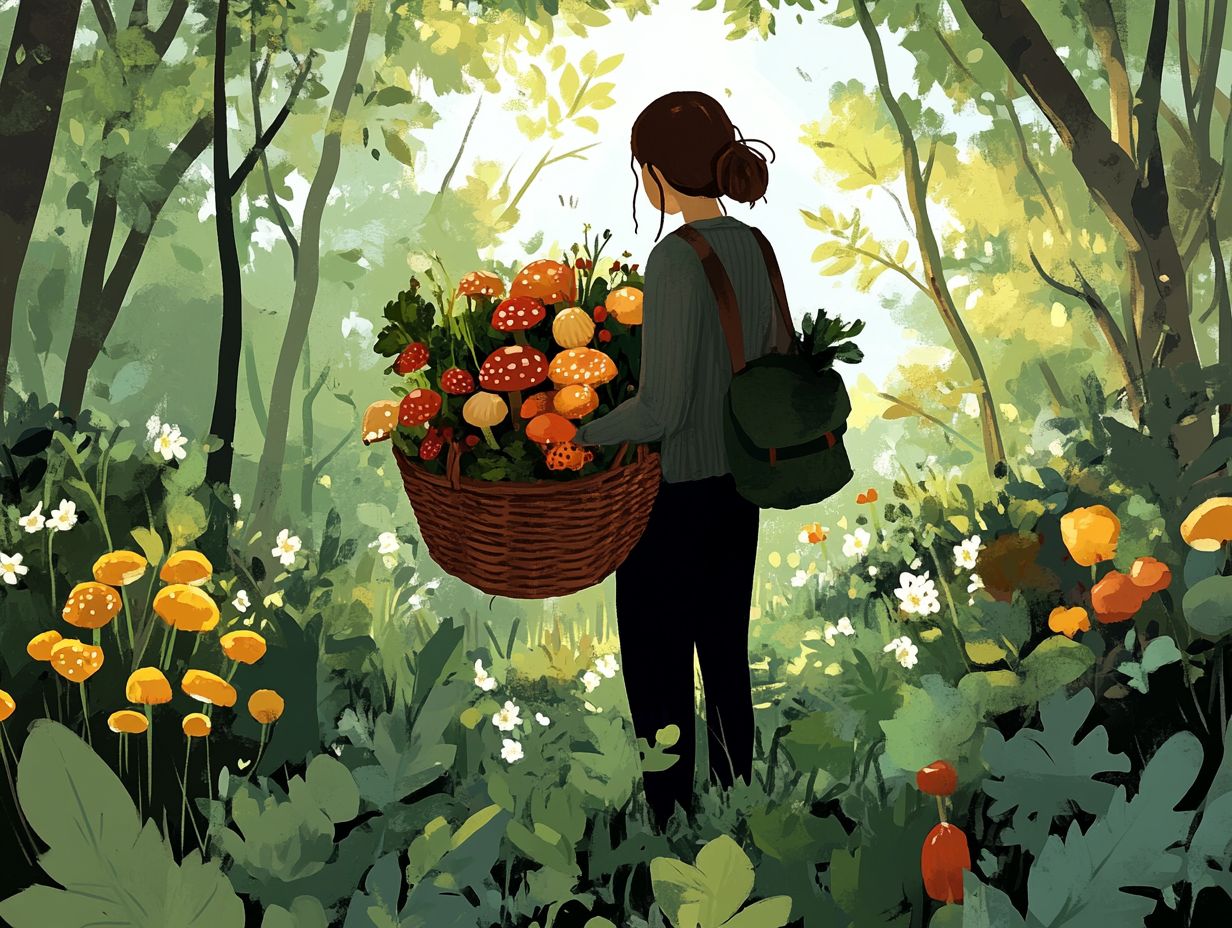
What is seasonal foraging and why is it important for gathering edibles?
Seasonal foraging refers to the practice of collecting wild edibles during their peak season of availability. Understanding why timing matters is important because it ensures that the plants are at their freshest and most nutritious, making them safer and more flavorful to consume.
How do I know when the best time is to gather edibles?
The best time to gather edibles depends on the specific plant you are foraging for. Generally, it’s important to research the seasonal guide for foraging techniques and its growing season in your area.
You can also look for visual cues, such as the plant’s blossoming or fruiting stage, to determine when it is ready to be harvested.
Are there certain times of the year that are better for foraging than others?
Yes, each season offers different types of edibles for foraging. For example, the best time to forage is typically in spring for gathering tender greens and early berries.
Summer is prime for fruit and flowers, fall is known for nuts and root vegetables, and winter offers hardy greens and certain types of mushrooms.
What are the benefits of gathering edibles during their peak season?
Gathering edibles at their peak ensures they are fresh and packed with nutrients. To maximize your chances of a bountiful harvest, refer to a seasonal foraging checklist to find a greater variety of plants.
Are there any safety precautions to keep in mind when foraging for edibles?
Yes! Always identify plants carefully. Avoid anything you aren’t 100% sure is safe. Choose areas free from pesticides and pollutants.
Can I forage for edibles year-round?
Some edibles are available year-round, but peak season is when they are freshest. Many plants grow multiple times a year, giving you chances to gather continuously.


